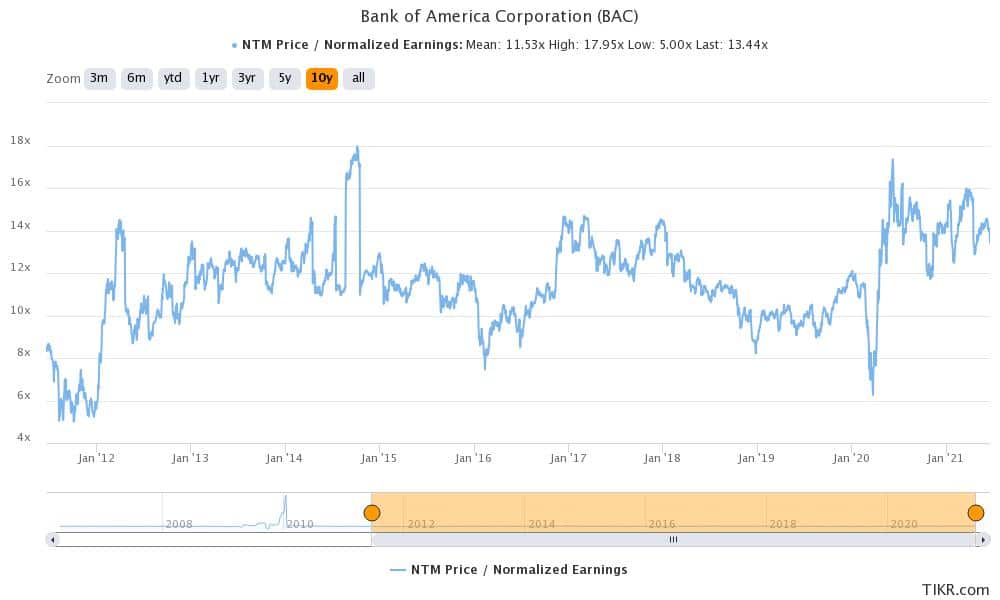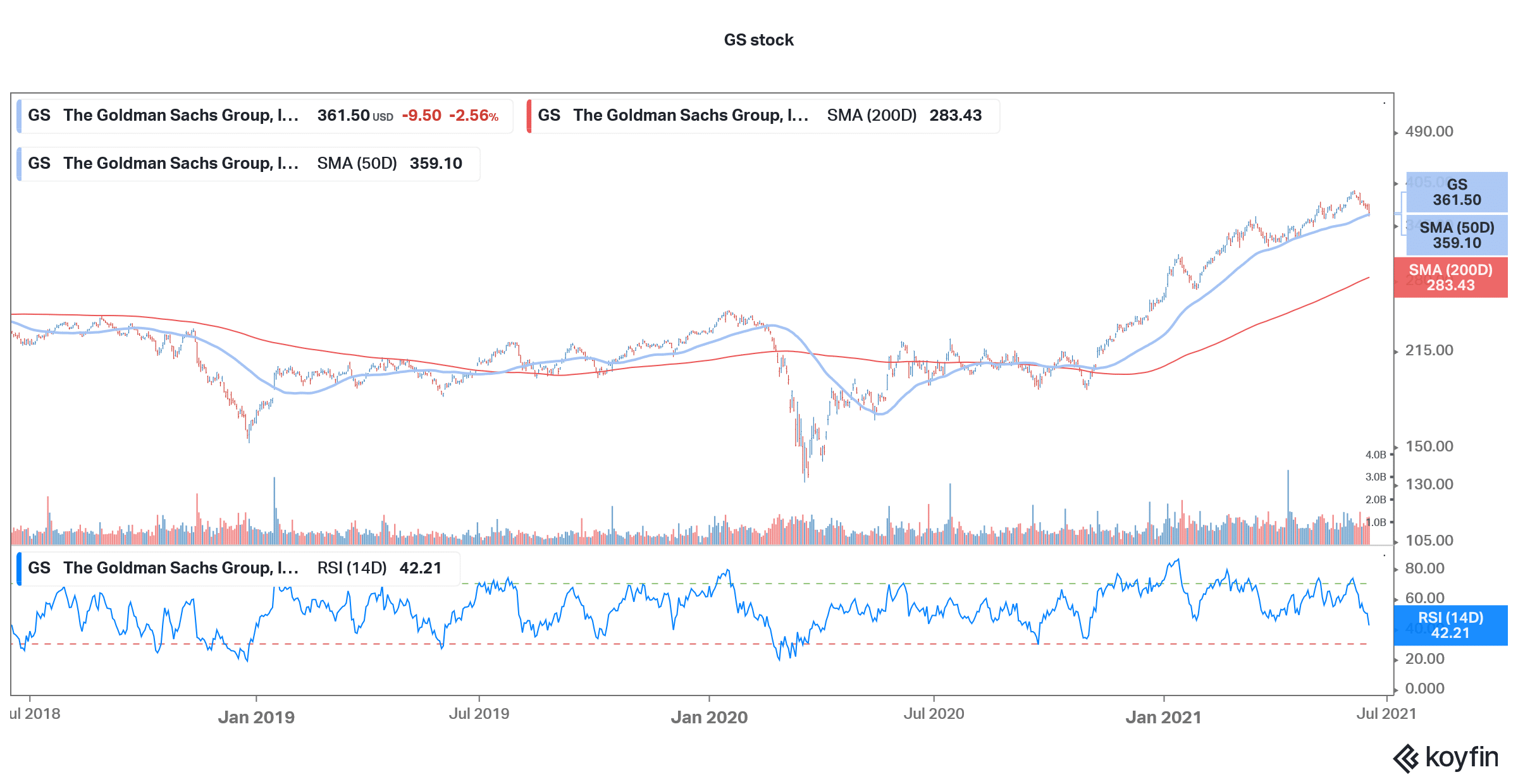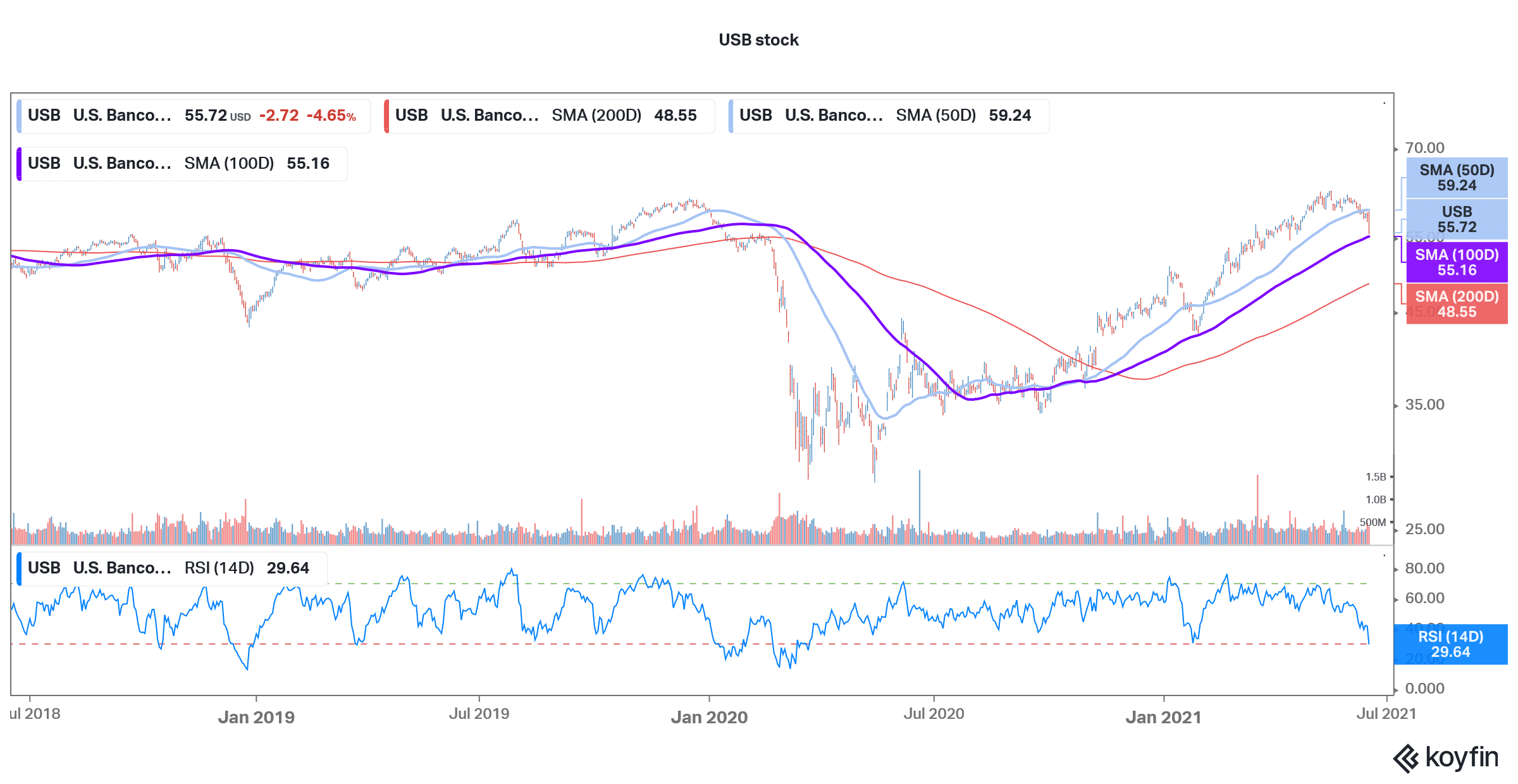5 Best Bank Stocks to Buy in June 2021
Please note that we are not authorised to provide any investment advice. The content on this page is for information purposes only.
Bank stocks fell sharply in response to the Federal Reserve meeting yesterday as the US central bank now sees rates rising in 2023. However, bank stocks are outperforming the markets in 2021. What’re the best bank stocks to buy in 2021?
The fall in bank stocks on fears of a rate hike actually sounds counterintuitive as bank stocks tend to do well in a high-interest rate environment. Banks borrow at the short end of the interest rate curve and lend at the long end. When long-term interest rates rise and the interest rate curve steepens, banks end up making high net interest margins.
However, in a rising rate environment banks end up making losses on their bond portfolio. That said, generally, a rising rate environment is a net positive for bank stocks. Berkshire Hathaway chairman Warren Buffett has also been historically bullish on the sector but he has trimmed his holdings greatly over the last year.
1. Bank of America (NYSE: BAC)

Bank of America stock is up 37% so far in 2021 and is outperforming the S&P 500 by a wide margin. Notably, while Buffett has exited several banking stocks, he actually increased the holdings in BAC and took it above 10%. Historically, the Oracle of Omaha has tried to limit his stake in banking stocks below 10% but he seems to have made an exception for BAC.
Now, Buffett’s love for BAC stock is not the only reason to buy it. It looks strong fundamentally also. The stock trades an NTM (next-12 months) PE multiple of 13.5x which is slightly lower than the 14.2x that it has traded over the last year. The multiple had peaked at almost 18x towards the end of 2014 which was a year before the Federal Reserve began its tightening.
Looking at the technicals, BAC has dipped below the short-term moving averages including the 30-day SMA (simple moving average) and 50-day SMA. However, it trades above the 100-day and 200-day SMA which is bullish. The stock’s 14-day RSI (relative strength index) of 32.90 is approaching the oversold levels of 30 and we might see a reversion soon.
BAC stock trades almost 8% lower than its average price target. If the momentum in the US economy continues, BAC stock could be a winner in the portfolio.
67% of all retail investor accounts lose money when trading CFDs with this provider.
2. JPMorgan Chase (NYSE: JPM)

The bank is sitting on massive cash which it can opportunistically invest as rates rise. “If you look at our balance sheet, we have $500 billion in cash, we’ve actually been effectively stockpiling more and more cash waiting for opportunities to invest at higher rates,” said JPM’s CEO Jamie Dimon said. He added, “I do expect to see higher rates and more inflation, and we’re prepared for that.”
JPM trades at an NTM PE multiple of 12.9x which looks reasonable. The multiple has averaged 13.5x over the last year while it peaked at 16.5x. JPM has a median target price of $171.20 which is a premium of 12.8% over the next 12 months. Of the 27 analysts covering the stock, 17 have a buy rating while six have a hold rating. The remaining four analysts rate JPM as a sell.
67% of all retail investor accounts lose money when trading CFDs with this provider.
3. Goldman Sachs (NYSE: GS)

With a year-to-date gain of 41%, Goldman Sachs is outperforming the banking peers in 2021. While several banking stocks have plummeted below the 50-day SMA, Goldman Sachs has managed to hold the level and trades slightly above the level.
This month, several analysts have taken a bullish view of GS stock, and JMP Securities, Piper Sandler, and JPMorgan Chase boosted their target price. Jefferies initiated coverage on the stock with a buy rating and $450 target price which implies an upside of almost 25% over the next 12 months.
Commenting on GS stock, Jeffries analysts said “While the 1Q21 [return on tangible equity] of 33% is unsustainable, a longer term path towards sustainably higher returns is underway. … Market share gains in IB/trading and newer initiatives, such as transaction banking, consumer banking, and alternatives in asset management, are incremental to both growth and returns.”
GS stock trades at an NTM PE multiple of 10.3x and a price-to-book value multiple of 1.54x. The multiples look reasonable and given the company’s strong position in the investment banking domain, a booming IPO market bodes well for the business.
67% of all retail investor accounts lose money when trading CFDs with this provider.
4. U.S. Bancorp (NYSE: USB)

USB is one bank stock where Buffett still holds a considerable stake even as he has fully exited Goldman Sachs and JPMorgan Chase. Unlike the other stocks discussed so far, which are universal banks, USB is primarily a consumer bank which is the traditional banking business of lending money.
USB stock has gained 25% so far in 2021 but has lost a little over 10% from the peaks and is in the correction zone. The stock managed to hold its 100-day SMA of $55.16 yesterday which is a strong support channel for the stock. With a 14-day RSI of 29.6x, USB stock looks oversold and we might see some recovery soon.
USB stock has an attractive dividend yield of 2.9%. The bank could increase its dividend further as the US Federal Reserve has allowed banks to increase dividends in the second half of 2021. The stock trades at an NTM PE multiple of 13x. Wall Street analysts see the stock rising 11% over the next 12 months.
67% of all retail investor accounts lose money when trading CFDs with this provider.
5. Citigroup (NYSE: C)

Citigroup reorganized its business earlier this year and said that it will exit consumer banking from 13 countries as part of a major overhaul. Together these markets made less than 5% of Citigroup’s 2020 revenues.
Commenting on the decision, Citigroup’s CEO Jane Fraser said, “While the other 13 markets have excellent businesses, we don’t have the scale we need to compete. We believe our capital, investment dollars and other resources are better deployed against higher returning opportunities in wealth management and our institutional businesses in Asia.”
Citigroup’s RSI fell to 22.4 yesterday and the stock looks in the oversold zone. The stock fell below its 50-day SMA and 100-day SMA yesterday after the crash. Citigroup trades at an attractive NTM PE multiple of 8.9x which is the lowest among the banks that we have discussed. Also, the stock trades at 0.9x its book value which is also a sign of undervaluation.
67% of all retail investor accounts lose money when trading CFDs with this provider.





